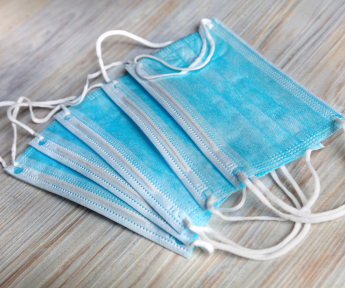 MASKS ARE COMING OFF—IT’S TIME TO HAVE THE CONVERSATION WITH CHILDREN
MASKS ARE COMING OFF—IT’S TIME TO HAVE THE CONVERSATION WITH CHILDREN
Tracy Vaillancourt and Wendy Craig | March 14, 2022
Tracy Vaillancourt, Ph.D., Professor and Tier 1 Canada Research Chair, University of Ottawa and Chair, COVID-19 Task Force, Royal Society of Canada
Wendy Craig, Ph.D., Professor, Queen’s University and PREVNet Scientific Director
Like it or not, the masks are coming off, and it is what adults do, and say, that will make children and youth feel comfortable with this change. Now is the time for adults to put aside their differences and create environments in which young people feel safe. If we fail to do this, no child will feel secure. If children do not feel safe and accepted, they will be more likely to have social, emotional, and academic challenges.
Consequently, difficult conversations need to be had. At the centre of these conversations must be the child, and an appreciation that they will not only be trying to determine what they want for themselves, but also navigate possible tensions arising from what their families, teachers, and peers want. The discussion will need to be age appropriate as younger school-aged children (Kindergarten to Grade 3) are far more concrete in their thinking than older students (Grade 4 and up); they may have a harder time reconciling why masks are no longer required, or why some children are wearing them, and others are not. Accordingly, several conversations with young children, ideally, reinforced across the different environments such as the school and the home may be needed to help them feel safe. A message shared by parents and educators will be reassuring to children and youth.
So, what should the conversation be? It is important that children and youth understand the decision to wear a mask is a personal choice. Furthermore, it is important to emphasise that we may not know why individuals are making their choice and that they may not want to disclose it. Regardless of the reason for masking or not, we need to support every child’s (and their family’s) decision. We must create environments for them, whether it be at home, in a classroom, at sports, where they feel protected, included, and empowered to make a choice that reflects their personal circumstances and beliefs.
We also need to highlight that it is common for people to hold different viewpoints, and that it is okay that not everyone will think or feel the same way about masking. What is most important is that we respect the decisions of others.
Finally, we will need to be vigilant to make sure that masks are not weaponized by children and youth, as we have seen with adults. We don’t want to create in groups and out groups, which often lead to discrimination and bullying. This means creating nurturing environments, modelling inclusion, increasing supervision, and having more discussions about inclusion, acceptance, empathy, patience, awareness, and the importance of recognizing that everyone has the right to make their own decisions about masking.
There has been significant debate and differences of opinion expressed about COVID-19 and how to address it. Sometimes these conversations have been aggressive, hurtful, and intolerant. We live in a society that provides us with the right to express our opinions, but we need to ensure we are doing it in a respectful manner. Adults are role models in children’s lives, and they are watching us— how we speak to one another and how we express our views about masking or not masking. Our opinions and our behaviour impact them. Let’s teach them, in this moment, how it is possible to have different opinions yet remain warm, accepting, inclusive, respectful, and supportive of each other in a difficult time.
Whether you agree or disagree with the decision about masking, one thing is clear, we need adults to create safe and accepting environments for children and youth. We need to provide them with a sense of belonging, mattering, and being appreciated for who they are and the choices they make with their families. We know some children and youth will be worried, some confused, and others okay with the masks coming off. It is our job to help them navigate the governments’ decisions, irrespective of which direction they take.
This article initially appeared in the Globe and Mail on March 14, 2022.



